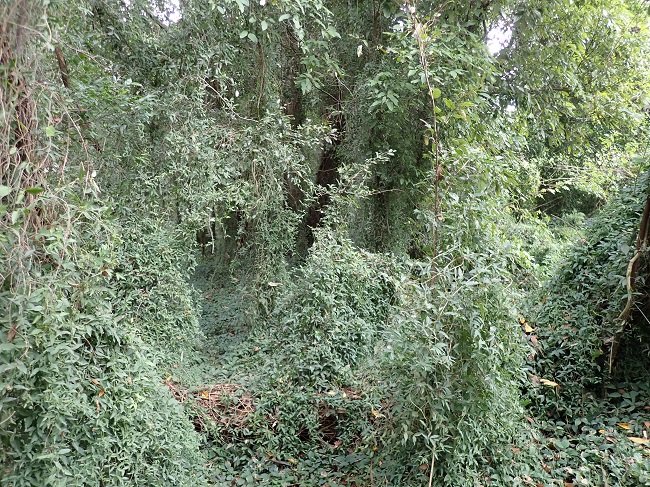Cat's Claw Creeper... Australia's worst weed?
Cat’s claw creeper (Dolichandra ungui-cati) is a long lived woody vine which is native to the Caribbean, Central and South America. It was declared a Weed of National Significance in Australia in 2012 due to its invasiveness and potential impacts. Anyone that has tried to control cat’s claw creeper or have witnessed the impacts to native vegetation and sadly, to entire creek or river systems, knows just how bad this weed is. In fact driving through the country or even through the heart of Brisbane, during October to December when the bright yellow fellows are on show, you realise how widespread this destructive weed is.
The vines grow along the ground and together with the seedlings, create a carpet that smothers native vegetation and prevents the germination of native plants. The vines grow vigorously and are heavy and quickly collapse the midstory of a forest before growing up to 30 m in height, smothering trees and preventing them from flowering and fruiting, and eventually collapsing the canopy. In addition to the winged seeds that are produced each year and are easily spread via wind and water, cat’s claw creeper also develops large underground tubers which contain enormous amounts of energy. The ability for this vine to store such energy means the vines re-shoot, sometimes for years despite ongoing control. It often means any infestation takes at least 5-10 years of continuous work to control!
The Ecosure ecological restoration team have developed numerous ecological restoration plans to assist a range of private and public landowners with controlling cat’s claw and restoring their sites. We have and continue to control this weed on sites across northern NSW and southeast Queensland. The largest ongoing project is in and around the riparian ecosystems of the Stanley River and its tributaries near Woodford in south east Queensland. Our on ground teams over the last 7-8 years have been tackling a 21 km infestation with funding and support from Moreton Bay Regional Council, Seqwater and Healthy, Land and Water. The team are continuing to balance the ongoing requirement of follow up and maintenance as this weed (and other nasty weeds such as Madeira vine) continue to re-shoot, with the primary control of larger vines impacting the midstory and canopy. The team to date have controlled approx. 14 km of the heavy infestation though ongoing maintenance is still required.
This work is essential – a robust riparian ecosystem supports a wide range of flora and fauna. In addition, a healthy riparian ecosystem mostly equates to a stable river or creekbank which directly influences the quality of water. In this case, it influences the quality of water entering Somerset dam preventing the dam filling with silt. In other cases, it directly influences the quality of water entering the bay or ocean. Ecosure hope to have followed up on all works across the 14 km of the Stanley River and its tributaries, as well as extend the area of primary weed control by another 1-2 km, on both sides of the creek, by the end of June.


